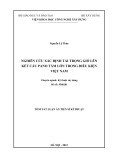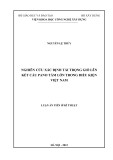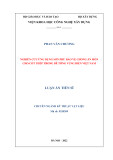
V
LIST OF PUBLICATIONS
Zhu, W, Setunge, S, Gravina, R & Venkatsan, S (2007), ‘Use of fault tree analysis in risk
assessment of reinforced concrete bridges exposed to aggressive environments’, in Proceedings of
the 4th International Structural Engineering and Construction Conference, Melbourne, pp.
387-393.
Zhu, W, Setunge, S, Gravina, R & Venkatsan, S (2007), ‘Use of fault tree analysis in risk
assessment of reinforced concrete bridges exposed to aggressive environments’, Concrete in
Australia, vol. 34, no. 1, pp. 50-54.
Zhu, W, Setunge, S, Gravina, R & Venkatsan, S (2008), ‘Estimation of residual capacity and
time-dependent reliability of reinforced concrete bridges after initiation of a deterioration
mechanism and subsequent rehabilitation’, Australian Structural Engineering Conference.
Melbourne (Accepted for publication).































